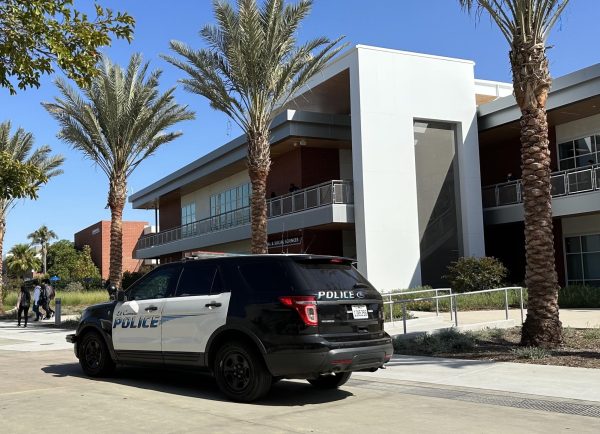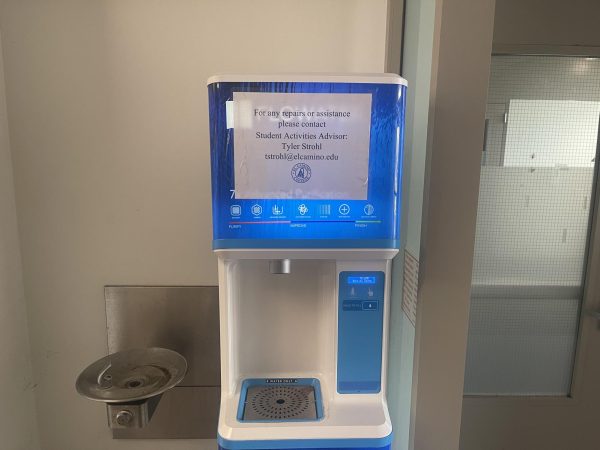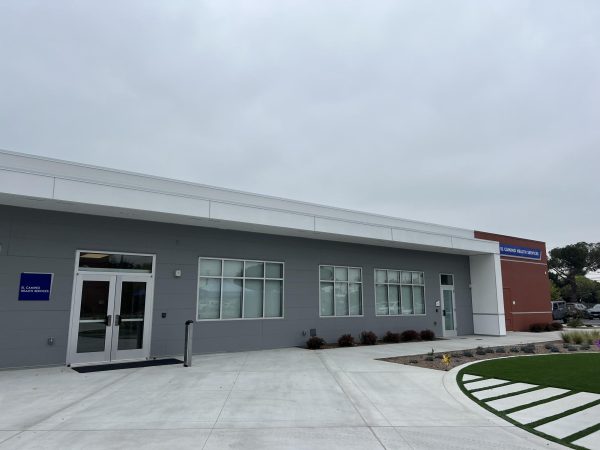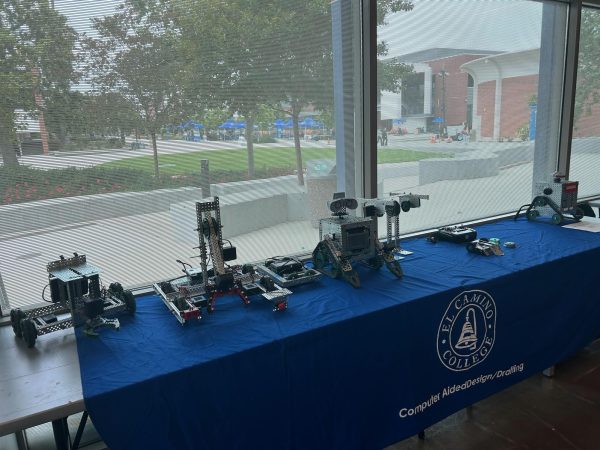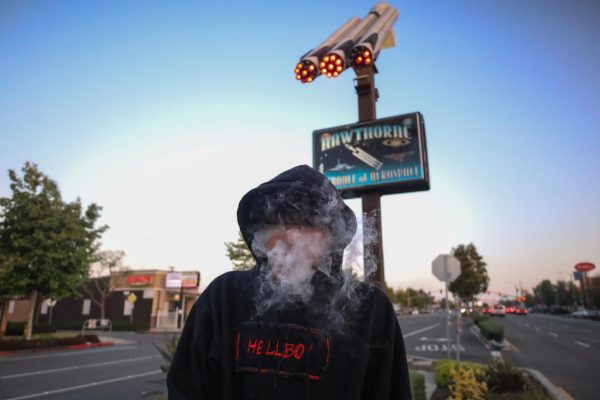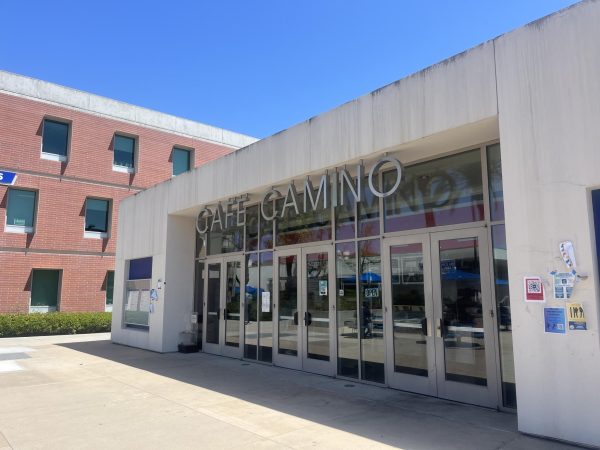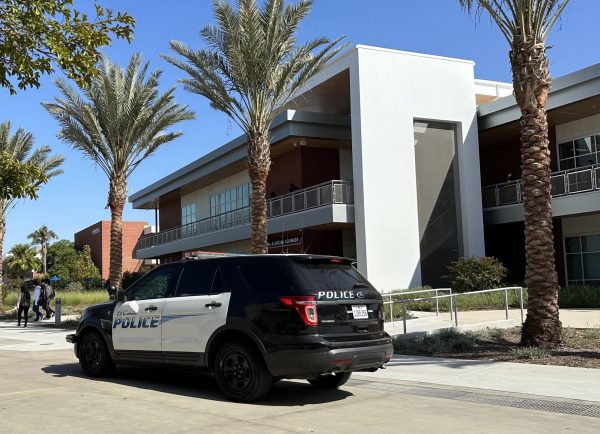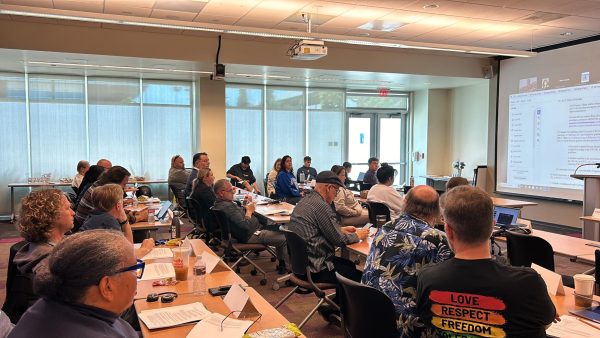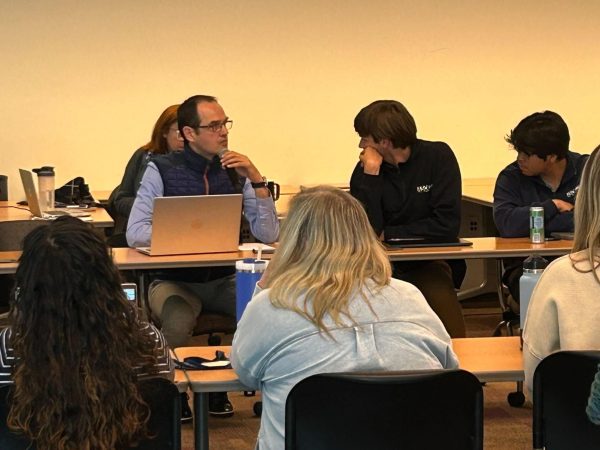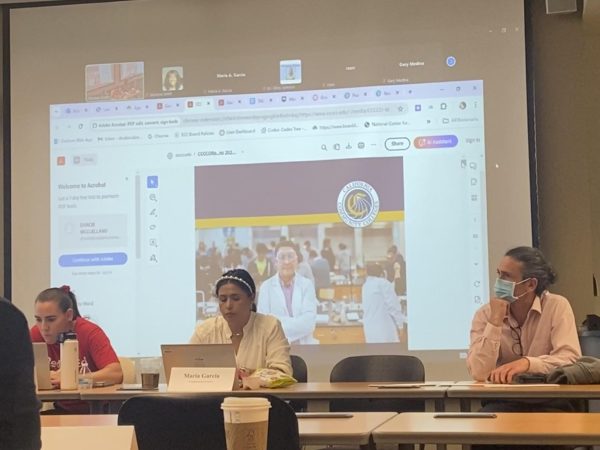El Camino out of compliance with state law to prevent opioid overdose deaths
Fentanyl is up to 50 times stronger than heroin and 100 times stronger than morphine, and is often added to other drugs to cause a more potent high, including heroin and methamphetamine. According to the National Institute on Drug Abuse, synthetic opioids other than methadone (primarily fentanyl) “were the main driver of drug overdose deaths with a nearly 7.5-fold increase from 2015 to 2021.” (Kim McGill | The Union)
El Camino College is currently out of compliance with a new state law that went into effect on Jan. 1, 2023, mandating the distribution of the life-saving overdose drug, Naloxone.
California’s Campus Opioid Safety Act — Senate Bill 367 — authored by Senator Melissa Hurtado, “requires the governing board of each community college district and the trustees of the California State University to require that each campus health center…distribute dosages of a federally approved opioid overdose reversal medication.”
According to the legislation, “To obtain free naloxone, each campus health center needs to apply to the CDPH standing order administered by California Department of Public Health’s Naloxone Distribution Project.
Each campus health center must apply to the DHCS Naloxone Distribution Project (NDP) to receive free naloxone kits.
The health center has naloxone that they can administer in an emergency, but college officials have told Student Health Services that they may not distribute naloxone to anyone.
Susan Nilles, the faculty coordinator of Student Health Services, said that she has tried to inform campus administrators that naloxone is both safe and often essential to save the lives of people experiencing an opioid-related overdose emergency.
“Individuals are not comfortable with this direction,” Nilles noted.

El Camino’s response has been to prevent Student Health Services from distributing naloxone to trained individuals.
Nilles said she was told legal counsel fears lawsuits if naloxone fails to reverse an overdose.
Failure of overdose prevention
According to the California Department of Public Health (CDPH), in 2021, there were 6,843 opioid-related overdose deaths in California — 57% caused specifically by fentanyl.
Nationwide that same year, the U.S. Centers for Disease Control and Prevention (CDC) reported that more than 71,000 deaths were attributed to fentanyl and other synthetic opioids and that youth 12-18 die in California more frequently from overdoses than compared to the U.S. overall.
Fentanyl is up to 50 times stronger than heroin and 100 times stronger than morphine and is often added to other drugs to cause a more potent high.
According to the National Institute on Drug Abuse, synthetic opioids other than methadone (primarily fentanyl) “were the main driver of drug overdose deaths with a nearly 7.5-fold increase from 2015 to 2021.”
EdSource reported that “more than 770 Californians under the age of 24 died of fentanyl overdoses in 2021, a 21-fold increase since 2016.”
In addition, the CDC found that youth 12-18 die in California more frequently from overdoses than compared to the U.S. overall.
Dr. Julie Poepoe, a Nurse Practitioner at Student Health Services, has conducted opioid informational workshops for students and employees. As an emergency room nurse, she has also witnessed the deadly aftermath of too many opioid overdoses.
“We have an overdose epidemic, including deaths of 15 to 20-year-olds. We should be doing everything possible to protect students,” Poepoe said.
Even as overall drug use among youth in the U.S. has declined — as reported by KidsData — both hospitalizations and fatalities have skyrocketed.
This change is attributed to the widespread and increasing availability of the synthetic opioid fentanyl that’s “often packaged to appeal to young people and is at least 50 times stronger than morphine” according to the federal Drug Enforcement Agency.
Currently, the health center is the only location on campus that has naloxone and is both trained and authorized to administer it on campus.
“That’s not good enough,” Nilles said.
At a minimum, Student Health Services wants to train an El Camino employee in each building in how to administer naloxone and to provide them with the doses needed in an emergency.
According to Nilles, the Student Health Center would be able to distribute naloxone as well as fentanyl test strips to trained students and employees would also be encouraged to carry both.
El Camino Police Sergeant Ruben Lopez said that the police department does not administer naloxone or have naloxone.
“If somebody has any kind of medical emergency what we do is contact LA County Fire and they would respond, and they have naloxone to administer if they have to,” Lopez said.
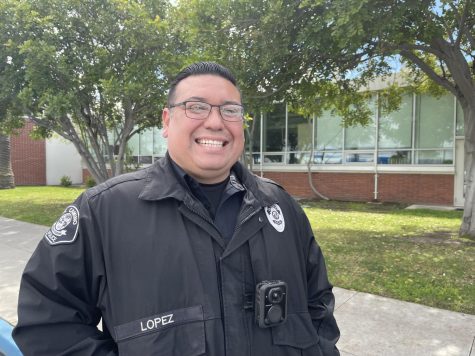
According to CDC, people experiencing an overdose can die within minutes, before the arrival of first responders.
Local districts respond differently
Redondo Beach Unified School District (RBUSD) has a comprehensive drug and alcohol education and prevention program at all grade levels.
The district partnered with South Bay Families Connected to organize a presentation for families on fentanyl and how to both prevent and reverse an overdose held at Redondo Union High School on Feb. 9, 2023.
After seven students overdosed in the fall of 2022, Los Angeles Unified School District (LAUSD) partnered with the LA County Department of Public Health and announced the implementation of district-wide training in naloxone use and distribution of the overdose-reversal treatment in all K-12 schools.
“LAUSD graduates are coming to El Camino, and we’re totally behind,” Nilles said. “High school and middle school students are now getting more overdose prevention education than El Camino provides.”
Nilles was hoping that El Camino would be proactive and emerge as a leader among college campuses in responding to the opioid overdose crisis.
But in a recent meeting, she felt she could not yet raise the need to distribute fentanyl test strips because of the college leadership’s previous response to naloxone availability.
“We won’t give up fighting for students’ lives,” Nilles said.
In the meantime, student health services will continue to provide information workshops as well as referrals to other places people can access naloxone.
El Camino’s drug/alcohol response
On March 2, 2023, El Camino’s Office of Marketing and Communications issued a memo outlining the college’s Drug and Alcohol Abuse Prevention Program (DAAAP) and Board Policy 3550.
They include “a clear statement that El Camino College will impose disciplinary sanctions on students and employees…up to and including expulsion or termination of employment and referral for prosecution for violations of the standards of conduct.”
Lopez said that it’s still a crime to sell and use drugs, depending on the substance.
“If it’s an illegal substance as defined by the penal code, then we would investigate and act accordingly,” Lopez said. “It could be an arrest, it could be a citation, it could be a warning depending on the circumstances.”
The Union inquired whether a warning about potential termination or expulsion would deter individuals from reporting concerns regarding drug or alcohol use.
“I think they might hesitate,” Robin Dreizler, Acting Vice President of Student Services, said. “But somebody who reaches out for help is generally offered that assistance. It’s when somebody’s hiding drug or alcohol abuse that there could be an issue.”
Amanda Perez has been a certified drug prevention and treatment counselor for more than two decades. She came into the work as a recovering addict.
“I was trapped,” Perez said. “You’ll do anything for that drug, lose your morals and scruples.”
Eventually, she went to prison. Punishment only drove her further into her addiction, Perez said.
“I could get any drug I wanted in prison,” she said.
Harm reduction has emerged as a leading community health model to counter the war on drugs’ reliance on police suppression, prosecution and incarceration to address drug use.
There is a growing emphasis among medical professionals, legislators, schools, communities and some law enforcement agencies to implement harm reduction.
Harm reduction prioritizes changes in behavior. The distribution of naloxone and fentanyl test strips, ending the sharing of needles and cleaning of needles after each use, and condom use are all examples of harm reduction strategies.
Threats of expulsion from school, getting fired or arrested don’t work, Perez said. “Threats increase the isolation, shame and fear that lead people to use drugs and alcohol,” she added.
Perez explained that people won’t stop using, but will feel they can’t ask for help and will also become more secretive.
“You get exiled. You’re seen as a bad person,” Perez said.
Reflecting on when she got high, Perez said that she wanted help. It was easy to get arrested and easy to get locked up, she said.

“But there was never an open bed in drug treatment,” she said. “I had to wait months, and by then it was too late.”
Mirna Solorzano worked as a violence intervention worker and co-founder of Homies Unidos for 20 years and has been a paralegal for the past seven years.
Solorzano’s childhood friend, Sylvester Tellez, first got high with his mom when he was 10 years old. He went to juvenile hall that year for the first time and spent his whole youth in juvenile halls, probation camps and the California Youth Authority, the state’s youth prison system.
He was shot in the leg and lived with a permanent and painful disability.
“Sylvester got kicked out of every school and in the end, even his family kicked him out,” Solorzano said. “He would get clean for a while but then get in a relationship with another addict and it would start again.”
Tellez never had access to trauma-informed care, long-term pain management or mental health.
Tellez overdosed in a hotel on LA’s Skid Row, and he was at the coroner’s office as a John Doe for two weeks before his family found him.
A few years later, Solorzano was worrying about her own son as he struggled with methamphetamine addiction.
“When my son was in high school they expelled him for smoking weed. I got him into counseling but that only lasted for a few months,” Solorzano said.
Without school, he had long hours of unsupervised time every day, and eventually, he was addicted to more serious drugs.
Solorzano said that young people like Tellez and her son carry the trauma of what they and their families have experienced for generations.
“People use drugs to escape from their pain,” Solorzano said.
When they are banned from school, work, or family, they have no outlet to expose their emotions and punishment only makes the pain worse, and increases their drug and alcohol addiction, she said.
RBUSD’s Social and Emotional Learning Task Force works to implement support services to create safer and healthier schools without prioritizing zero-tolerance policies focused on suspensions and expulsions.
LAUSD has also moved away from harsh school discipline and is implementing positive behavior interventions and support, restorative justice and mental health services as alternatives to arrest, suspension and expulsion.
California state assembly members and senators have rejected recent attempts to pass laws that would increase penalties for fentanyl distribution and sales.
They cited concerns that California could repeat mistakes made by the war on drugs policies that contributed to racial disparities in arrest and sentencing.
For example, past legislation enacted different sentencing requirements for rock versus powder cocaine where wealthier and predominantly white communities that used primarily powder faced two years in prison.
Low-income communities of color people who create rock cocaine, also known as crack, could be sentenced to 15 years or more.
Originally initiated by politicians and law enforcement from LA County including Richard Nixon and Ronald Reagan, the war on drugs has dominated state, federal and international policies for more than five decades and led to the longest period of mass incarceration in U.S. history.
In California alone, between 1980 and 2010, the state built 21 state prisons but only three small California State Universities and one University of California campus.
The prevention plan’s confusing origin
Since 1989, U.S. law has required that all schools, from kindergarten through college, develop a prevention plan to receive federal education funding.
But, El Camino staff revealed a lack of clarity on who develops and leads drug and alcohol policies on campus.
The March 2 DAAAP memo was signed by Vice President Dreizler.
While he knew the directive was issued, Dreizler said he didn’t know that it had his signature.
He was also unsure who created the DAAAP, or who prohibited naloxone distribution.
He suggested the Office of Workplace Safety and Risk Management.
Valerie Wagner in Risk Management said that their office did not develop the prevention program or block naloxone distribution.
Nilles said health services advises on the DAAAP, but that it is created and managed by the campus police department.
Lopez said that the police did not develop the DAAAP.
“I think a campus drug plan sounds like a risk management function,” Lopez said.
Where to access naloxone
Perez got a call on May 24 from her family. Her 25-year-old nephew — who was about to be a father for the first time — had just died from a fentanyl overdose.
“He was dabbling. But, people don’t really know fentanyl’s strength,” Perez said, holding back tears. “His mother found him. How devastating is that?”
Naloxone, Perez said, “should be in every home, every school, every backpack.”
The Naloxone Distribution Project administered by California’s State Department of Health Care Services provides free naloxone to schools, colleges and health clinics.
In addition, a growing number of county public health departments, hospitals, clinics, drug treatment agencies and shelters are distributing naloxone and fentanyl test strips.
Individuals can also access both free naloxone and test strips by taking an online workshop at endoverdose.net.
Narcan brand naloxone nasal spray will soon be sold in stores without a prescription. On March 29, 2023, the U.S. Food and Drug Administration approved Narcan to be the first over-the-counter naloxone available.



